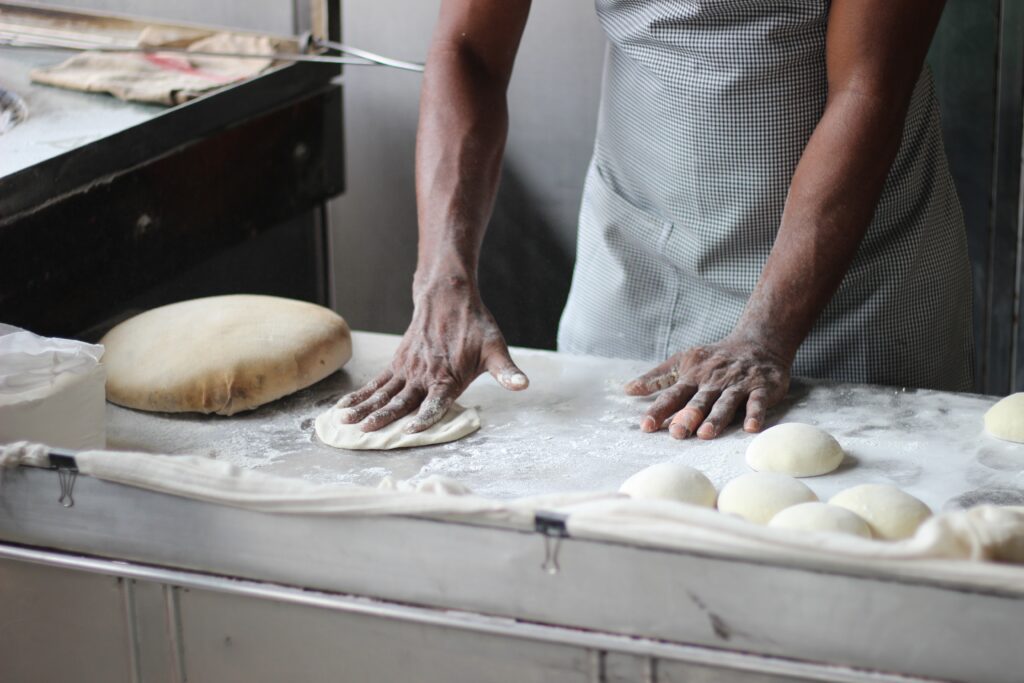Before we jump to any conclusions, it is important to know the basics of this dietary restriction. Firstly, we must understand what is gluten? It is a protein compound stored in some cereals’ seeds, such as wheat, barley, and rye. This protein compound is necessary for the germination and growth of the plant’s bud.
This group of proteins is widely used in the bakery, pasta, and beer industry. Furthermore, its function, in the case of bread and cakes, for example, is to provide elasticity, adherence, and structure to the food.
In this post, you will understand in detail how it works.
Who even *heard* of gluten till a few years ago?
― Donald Margulies, The Country House
Jump To Section
The Role Of Gluten On Doughs
You can also watch this and other exclusive GA Originals on YouTube.
Gluten proteins, much like rubber bands, also have the tendency to spring back into their original form. This elasticity in gluten is an obvious problem when it comes to shaping dough; for instance, pizza dough with too much elasticity will creep back into a ball when stretched out on the pizza pan. This is where proofing comes in.
Proofing not only lets the leavening agent perform by releasing gas into the developed gluten strands but also gives the gluten a chance to relax and become less elastic.
Relaxation occurs when a portion of the gluten strands disconnect and causes the dough to become more workable.
After resting or proofing, the dough is punched down and worked again to realign the gluten proteins, and either proofed a third time or worked into its final shape. Once the dough is shaped, it is left to rest. Here the leavening agent continues to produce gas that is trapped in the layers of gluten, and the dough rises the final time. When the dough is placed in the oven, the steam causes the leavening agent to accelerate gas production to inflate the gluten layers.
Finally, the gluten proteins gelatinize into elastic bubbles that hold their form and result in a finished dough preparation.
The Way Gluten Reacts In Bread

Looking at the way gluten reacts in bread making is a valuable counterpoint to understanding gluten in cakes and pastries.
In baked preparations where a crumbly texture is expected, limiting the gluten development makes sense rather than encouraging it as you would when making bread. For bread, the dough is worked to form the gluten, while, in most pastries, the dough or batter is mixed only enough to incorporate the ingredients and keep the gluten short.
Ingredients such as sugar and fat also play a role in limiting gluten outcomes. Fat molecules isolate the gluten depending on the preparation, stopping them from connecting.
The crumbly texture of shortbread pastry, with its 2:1 ratio of flour to butter, is an excellent example of the results of limited gluten development.
It is not harmful to our health. No conclusive research or scientific studies indicate that this protein found in cereals, such as wheat, barley, and rye, harms the functioning of the body of normal and healthy individuals. Once consumed, It helps in the proliferation and renewal of beneficial bacteria that aid food digestion.
However, people who have some reaction to its consumption, such as celiac disease or gluten intolerance, follow a restrictive diet that eliminates gluten. In addition, there is no data to prove that giving up gluten-containing foods leads to considerable weight loss.
Did you like this article?
I hope this article has improved your wine skills. To learn more about wines, take a look at the Sauvignon Blanc: The Enthusiast’s Guide To Wine Lovers.
Leave a comment below and share our content.
Help our community grow by following our social media on Spotify, Instagram, Facebook, Youtube, and Tiktok. And stay up to date with the news from the world of Gastronomy.
Don’t forget to tag @gastrovinoacademy on Instagram and hashtag it #gastrovinoacademy.
Cheers 🍷


